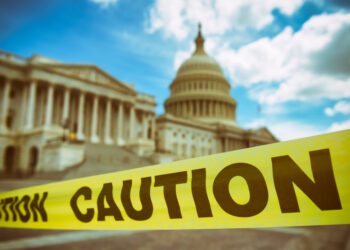During the recent US presidential campaign, Joe Biden had promised that, if elected, he would be tough on China on such issues as human rights, geopolitics, and intellectual property protection. However, he said that, unlike the previous administration, he would approach these issues in unison with democratic allies rather than unilaterally. We now have the first example of this policy shift, as well as its consequences. Last week, the United States, European Union (EU), United Kingdom, and Canada jointly imposed sanctions on four Chinese officials and one Chinese security agency. The sanctions were in response to China’s treatment of Uyghurs in Xinxiang Province. The sanctions involve travel bans and the freezing of financial assets.
The sanctions are modest and relatively focused but are important symbolically in that they represent a new confluence of decision-making by the United States and its allies. These sanctions augur further collective action and are likely meant to inform China that, on key issues of interest to the West, its actions could have consequences. Indeed, China quickly took umbrage and responded with its own sanctions. Specifically, China imposed a travel ban on 10 EU officials and four EU entities. The EU quickly responded that China’s action puts an EU-China market access agreement in peril. Meanwhile, at a NATO meeting in Brussels, US Secretary of State Blinken lauded the notion of collective action and said that NATO should be “focused on some of the challenges that China poses to the rules-based international order.” This is interesting in that NATO was originally created to counter the threat from the Soviet Union. Now it sees China as a threat to Atlantic interests. In addition, the NATO Secretary General said that the organization will look to develop “new partnerships” with other Asian nations including Australia, Japan, and South Korea. US President Biden recently held a virtual summit with the leaders of Australia, Japan, and India to discuss collective security in the Asia-Pacific region.
The joint US, EU, UK, and Canada action on sanctions came a week after a contentious meeting between top US and China officials in Alaska. That meeting was followed by unilateral action by the United States to impose sanctions on officials from China and Hong Kong related to China’s actions undermining the autonomy of Hong Kong. The Alaska meeting and the actions that followed signal that the United States is taking a tougher stand on China than many observers had anticipated. The US administration has been quite vocal in criticizing Chinese actions with respect to human rights and geopolitics. At the same time, it has not been as vocal in criticizing Chinese trade and investment policies. This implies that the Biden administration might take a two-pronged approach to China—that is, it will be tough on China with respect to human rights, geopolitics, and other national security concerns, while at the same time potentially easing economic tensions.
Although the Biden administration says that trade agreements are not yet on the agenda and that the first priority is to stabilize the US economy, it is unlikely that the United States will seek further restrictions on trade and investment with respect to China. Moreover, it is possible that, once domestic priorities are addressed, the administration will start negotiations with China to reduce tariffs and other restrictions.
As for China, it has a strong interest in maintaining an open economic relationship with the West. Indeed, it continues to encourage inbound foreign direct investment from foreign technology companies. Yet it also will not likely change its geopolitical views and actions in response to foreign pressure. The challenge for Chinese policymakers will be to keep foreign interference at bay while, at the same time, pursuing a mutual interest in more economic interaction.
Meanwhile, the US Congress is about to consider a US$100 billion plan to fund research on cutting edge technologies in order to counter the perceived threat from China. What is interesting is that support for this effort is bipartisan and substantial. It seems that, in order to generate enthusiasm for increased spending in the US Congress, it helps to position that spending as a response to the threat from China. It is reminiscent of what happened in 1957 when the Soviet Union launched Sputnik, the first satellite to orbit the earth. In the Unites States, this led to fear that the country was falling behind and substantial bipartisan support for boosting science education and investment in technology. In any event, US trade negotiator Kathryn Tai recently noted that the country has traditionally relied on free markets to determine the allocation of investment, while China has relied heavily on the state. She added, “We need to revisit how we conduct our economic activity … not to become China, but how to be true to ourselves and our traditions and be more strategic, knowing the quantity and the strategy and ambition that we are up against.”
Then again, the history of industrial policy shows mixed results, both in the United States and around the world. Around the world, subsidies sometimes go to relatively uncompetitive and politically connected businesses rather than the most potentially competitive. Subsidies have often been provided in conjunction with protection from foreign competition. This does not usually lead to better competitiveness. Rather, history suggests that, when countries expose themselves to competition, allow capital to be allocated freely, and provide support for R&D and development of human capital, success often follows. From a US perspective, one could argue that China’s policy of massive government support for state-run companies will, in the end, likely negatively impact its competitiveness.
By Ira Kalish, Deloitte US
Read the full article here.












